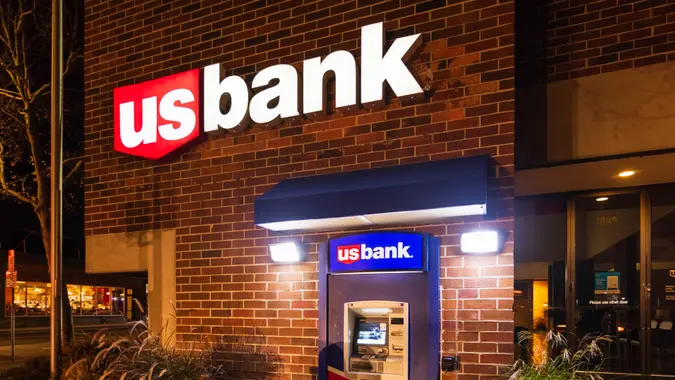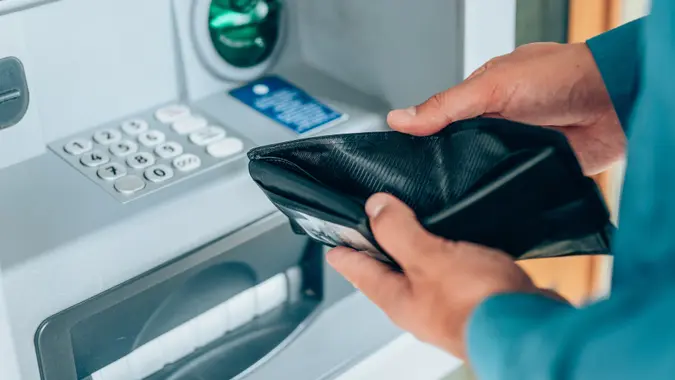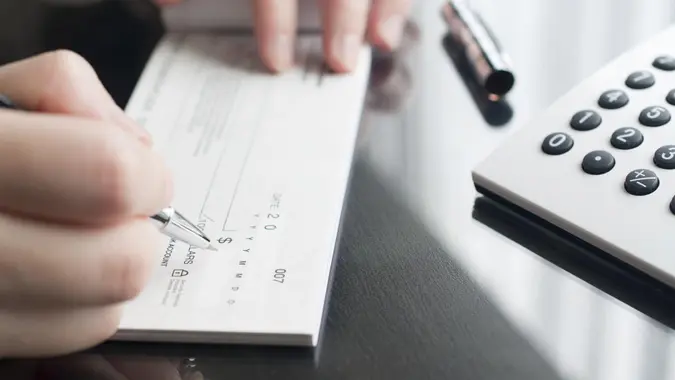Cashier’s Check vs. Money Order: What’s the Difference?

Commitment to Our Readers
GOBankingRates' editorial team is committed to bringing you unbiased reviews and information. We use data-driven methodologies to evaluate financial products and services - our reviews and ratings are not influenced by advertisers. You can read more about our editorial guidelines and our products and services review methodology.

20 Years
Helping You Live Richer

Reviewed
by Experts

Trusted by
Millions of Readers
Cashier’s checks and money orders are both secure payment methods, but they serve different purposes. Cashier’s checks are typically used for larger transactions and are backed by a bank, offering added security. Money orders, on the other hand, are for smaller payments and can be purchased at places like grocery stores, banks or at the post office. Here’s a closer look at the key differences between cashier’s checks vs. money orders.
Quick Comparison Between Cashier’s Checks vs. Money Orders
| Feature | Cashier’s Check | Money Order |
|---|---|---|
| Cost | -Depends on the bank -Can range from $5 to $15 -Fees can be waived |
$1 to $5 — they are generally cheaper |
| Issuer | Banks | Can be issued by banks, grocery or convenience stores and post offices |
| Maximum amount | -Usually no limit -Meant for large transactions |
Capped at $1,000 |
| Where to buy | Banks or credit unions | Post offices, retailers, convenience stores, some banks |
| Security level | -Funds guaranteed by bank -High |
-Prepaid but prone to fraud -Moderate |
| Best for | -Large transactions -Usually for home and car purchases |
Small to mid-size payments when a check or cash isn’t accepted |
What Is a Money Order?
A money order is basically a prepaid check, meaning the funds are guaranteed.
- How it works: You can purchase a money order at retail stores, convenience stores, grocery stores and USPS. When you purchase a money order, you pay the face value and a fee. Funds can be paid via debit card or cash. You will have to fill in the recipient’s name, and they will cash it like a check.
- Fees: Fees vary but can range between $1 and $5.
Money Order Limitations To Know
- Money orders are capped at $1,000.
- Large transactions may require multiple money orders.
- Fraudsters often exploit money orders for scams.
- If lost, you can’t stop payment, but you may be able to get a replacement.
What Is a Cashier’s Check?
A cashier’s check is a secure form of payment issued by a bank and backed by its own funds. It’s typically prepared after the amount is withdrawn from your account.
- How it works: At the bank, you prepay the funds to guarantee the cashier’s check. The bank stands behind the official check. The check can be cashed or deposited.
- Fees: The fee is $5 to $15 and is dependent on the bank. The fees can be waived depending on your account status.
Cashier’s Checks Limitations To Know
- Cashier’s checks are usually only issued by a bank or credit union.
- It may take time to replace a cashier’s check.
- Scammers sometimes use counterfeit cashier’s checks to defraud others.
- Funds may not clear instantly for the recipient.
Which Is More Secure: Money Order or Cashier’s Check?
Cashier’s checks are generally more secure than money orders. They are issued by banks and are harder to counterfeit. Cashier’s checks are generally reserved for larger transactions and are traceable if they are lost.
Money orders are generally for smaller payments and can be more susceptible to theft if the recipient’s name is left empty.
Lost Your Money Order or Cashier’s Check? Here’s What To Do
Item What to Do Replacement Time Money order -Contact the issuer
-Provide a receipt
-Fill out a claim formCan take 30 to 60 days or longer to process Cashier’s check -Report the loss to the bank
-Requires a declaration of loss
-Can be a waiting periodRequires a 90-day hold for replacement
When To Use a Cashier’s Check vs. Money Order
- Use a money order: If the payment amount is less than $1,000. Money orders are for small-to-medium payments and if you want a more affordable option with minimal fees.
- Use a cashier’s check: If you have a large transaction like payment for a house or car. Cashier’s checks are for larger payments that are secured by the bank, or for large transactions that require an official payment method.
Final Takeaway: Choose the Right Payment Method for Your Needs
Cashier’s checks and money orders both offer safe, prepaid payment options — but they serve different needs. Once you’ve figured out how much you’re sending and how quickly the payment needs to clear, choosing between them becomes simple.
Whichever option you choose, be sure to store it securely and understand the replacement process in case it’s lost. And don’t forget to compare fees — they can vary based on where you buy them.
Cashier's Check vs. Money Order: FAQ
Still have questions? Here’s a quick rundown of the most common ones to help you decide which payment method is right for you.- What's the difference between a certified check and a cashier's check?
- A certified check is written from your own account and verified by the bank to ensure sufficient funds.
- A cashier's check is issued and guaranteed by the bank using its own funds, making it more secure for large transactions.
- What's safer: a cashier's check or a money order?
- A cashier's check is generally safer than a money order. It is backed by a bank and is harder to counterfeit.
- What's better, a money order or a cashier's check?
- For large amounts, a cashier's check is likely more secure. Money orders are better for smaller sums.
- What is the downside of a cashier's check?
- A downside of cashier's checks is that they are typically more expensive and harder to replace.
- How much does a cashier's check cost?
- Cashier's checks can cost between $5 to $15, but some banks may waive these fees.
- How much is a money order for $1,000?
- Most places charge $1 to $5 for a money order.
- How much do money orders and cashier’s checks cost?
- Cashier’s checks typically cost between $5 and $15, though some banks may waive the fee depending on your account.
- Money orders generally cost $1 to $5, with exact fees depending on the issuer — for example, USPS charges $3.40 for a $1,000 money order.
Cynthia Bowman contributed to the reporting for this article.
Our in-house research team and on-site financial experts work together to create content that’s accurate, impartial, and up to date. We fact-check every single statistic, quote and fact using trusted primary resources to make sure the information we provide is correct. You can learn more about GOBankingRates’ processes and standards in our editorial policy.
- USA.gov "Common Scams and Frauds."
- FDIC "Beware of Fake Checks"
- USPS "Sending Money Orders"
 Written by
Written by  Edited by
Edited by 























